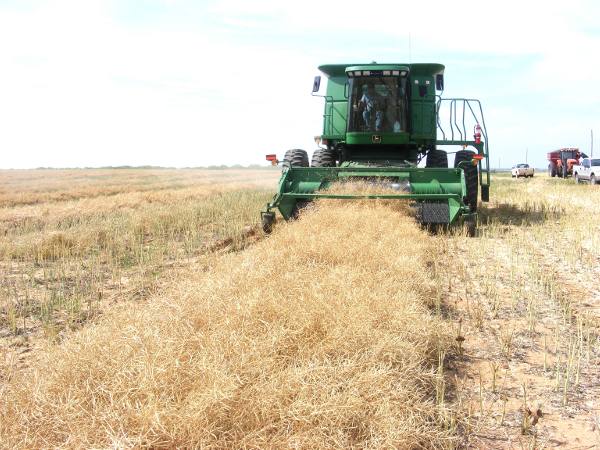August 10, 2012

Southern Plains wheat farmers can make more money if they rotate with winter canola, according to research conducted by Eric DeVuyst, Oklahoma State University agricultural economist, who spoke recently at the eighth annual Oklahoma-Kansas Winter Canola Conference at Altus, Okla.
DeVuyst explained that winter wheat grown two years in a row, followed by one year of Roundup Ready winter canola, will yield $61.87 per acre compared to $41.81 per acre profit with continuous wheat. DeVuyst came up with these figures after entering into typical wheat and canola production budgets all of the expenses spent by farmers with both crops. Expenses contained in the budgets included cost of fertilizers, land preparation, herbicides, insecticides, fungicides, aerial pesticide applications, operating loan interest rate, harvesting and hauling costs.
The Oklahoma Canola Systems versus Continuous Wheat Budget Comparison was developed to assist producers to project returns from canola systems in comparison to continuous wheat, DeVuyst said. It is a joint program of the Department of Agricultural Economics and the Department of Plant and Soil Sciences of OSU. The program can be downloaded from: www.agecon.okstate.edu/faculty/publications.asp.
For nearly a decade, OSU and Kansas State University research and Extension agronomists have extolled the advantages of growing winter canola in rotation with winter wheat.
Dr. Thomas Peeper, OSU Warth Distinguished Professor of Agronomy, originally was seeking effective ways to control perennial weeds infesting continuously-grown winter wheat in the Southern Plains.
He looked into canola, originally grown in the U.S. Northern Plains and Canada as a spring crop. Crop geneticists were able to change canola to a cool season crop so it could be grown in the same season as winter wheat.
Winter canola has different growing habits and plant characteristics from wheat. So, grown after wheat, canola will gradually do away with such weed pests as winter rye and cheat grass. These weed seeds in harvested wheat results in serious dockage at market. Growing wheat year after year has caused a rapid increase of the weeds. Costly herbicide applications are the only other way to combat the weeds.
Winter canola has a large taproot that pushes deeply in dry soil, seeking subsoil moisture. The taproot leaves the soil with better tilth, leaving it in better condition for seedbed preparation and crop moisture retention.
Winter canola grows well in the Southern Plains. Compared to less than 10 years ago when approximately 12,000 acres were planted in the area, more than 185,000 acres were harvested in Oklahoma this spring. Winter canola is also a high value crop, currently bringing $11.50 per bushel compared to $8.50 for winter wheat.
Farmers interested in growing winter canola should contact seed companies soon to obtain seed before the supply dwindles. Another important date for prospective winter canola growers is August 31, the final date when they can purchase crop insurance. Farmers should notify local crop insurance agents to get more information.
Growing contracts and other important information on winter canola production can be obtained from the Producers Cooperative Oil Mill, Oklahoma City, Oklahoma, by contacting Gene Neuens, field services; Brandon Winters, oilseed procurement/risk management; or Heath Sanders, agronomist/field services at 405-232-7555. Neuens' email is [email protected]. Winters' email is [email protected]. Sanders' email is [email protected].
You May Also Like




